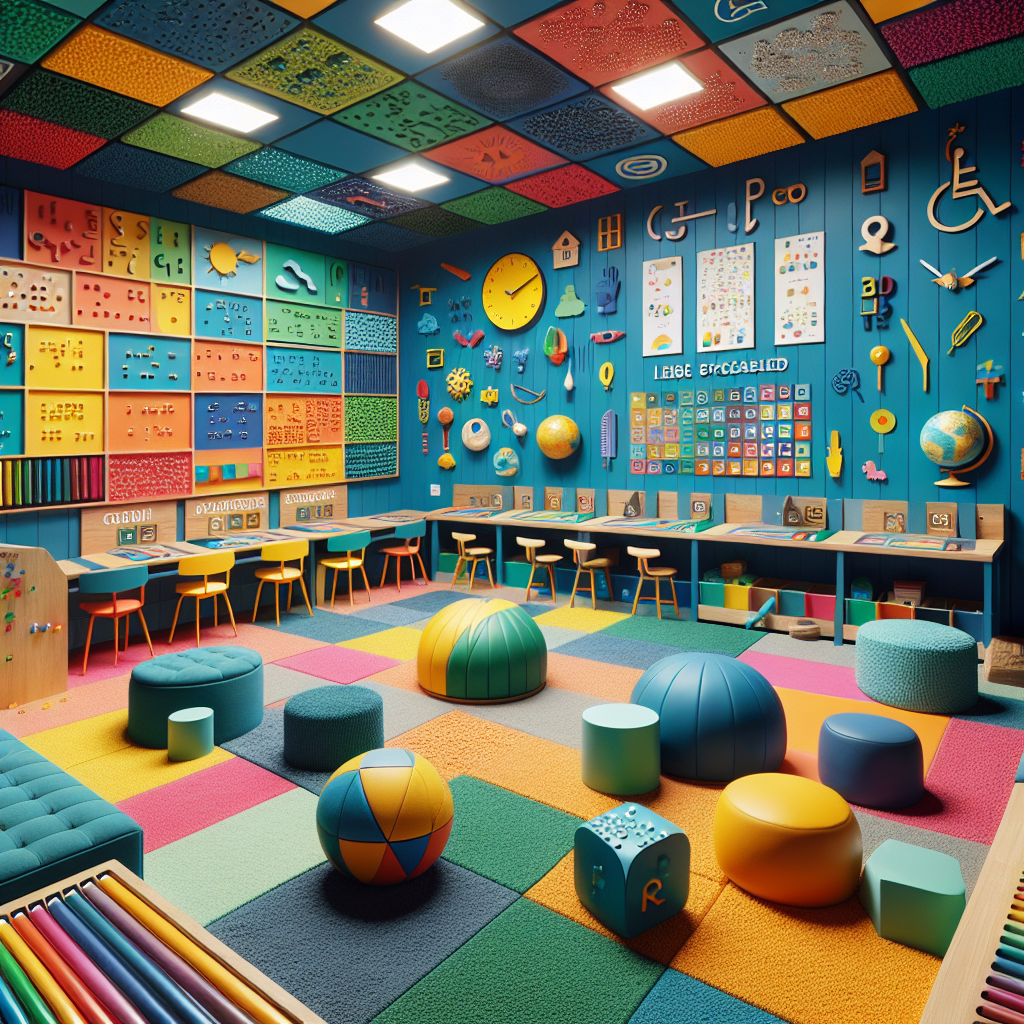In a world where educational paradigms are constantly evolving, sensory enrichment stands at the forefront of innovative teaching strategies. By engaging multiple senses, educators and therapists can create a more dynamic and efficient learning experience, particularly for individuals with learning difficulties or sensory processing disorders. This comprehensive article delves into the essence of sensory enrichment and its profound impact on the learning process, equipping you with the knowledge to apply these methods effectively.
Understanding Sensory Enrichment
Sensory enrichment involves the use of sensory stimuli to enhance cognitive and motor skills. It is based on the principle that stimulating the senses can lead to improved neural organization and function. Sensory-enriched environments are designed to provide individuals with a variety of sensory experiences that can help to reinforce learning pathways and encourage neural plasticity—the brain’s ability to adapt and reorganize itself.
The relevance of sensory enrichment to learning is underscored by extensive research in neuroscience and developmental psychology, which demonstrates the integral role of the senses in memory formation, attention, and executive function. By integrating sensory stimuli with educational content, learners can experience a more immersive and memorable educational journey.
For more insights into the broader context of sensory health, explore Avix Health’s detailed resource on Sensory Health.
The Role of Sensory Integration
Sensory integration is the process by which the brain organizes and interprets sensory information from the environment and one’s own body. Effective sensory integration is crucial for learners to interact with their surroundings in a meaningful way. It affects everything from emotional regulation to motor skills and academic performance.
For individuals with sensory processing challenges, sensory integration therapy can be life-changing. It facilitates the development of coping strategies and skills necessary for academic success and daily living. To understand more about how sensory issues can affect academic performance, read "The Impact of Sensory Issues on Academic Performance" on Avix Health.
Strategies for Sensory Enrichment
Implementing sensory enrichment strategies can take many forms, depending on the needs of the individual and the learning objectives. Here are some methods that have shown promise in enhancing learning through sensory enrichment:
Multisensory Teaching Techniques
Multisensory teaching involves using two or more senses simultaneously during the learning process. This can include visual aids, tactile materials, auditory feedback, and kinesthetic activities. For instance, when learning new vocabulary, a student might see the word, hear it pronounced, trace it with their finger, and use it in a sentence that they act out.
Sensory-rich Environments
Creating environments that stimulate the senses can promote exploration, curiosity, and motivation to learn. This includes classrooms with varied textures, colors, lighting, and sounds that can be tailored to fit the curriculum. Sensory-rich environments are particularly beneficial for children in early education and can be an integral part of their curriculums, as highlighted in "Incorporating Sensory Play into Early Education Curriculums" on Avix Health.
Sensory Diets and Breaks
A sensory diet is a personalized activity plan that provides the sensory input a person needs to stay focused and organized throughout the day. Sensory breaks, on the other hand, are short breaks that allow an individual to engage in activities that help them regroup and recharge. Both strategies can be crucial for maintaining optimal arousal levels for learning.
Technology-Assisted Sensory Enrichment
Advancements in technology have led to new ways of providing sensory enrichment. Interactive whiteboards, virtual reality experiences, and applications designed for sensory learning can offer unique and customizable sensory experiences. Read about "Advances in Technology for Sensory Health Screening" to see how technology is shaping the future of sensory health practices.
Evidence-Based Benefits of Sensory Enrichment
The benefits of sensory enrichment are well-documented. Studies have shown that sensory-enriched learning environments can lead to:
- Improved academic outcomes, particularly in reading and math skills.
- Enhanced attention and concentration.
- Better memory retention and recall.
- Increased motivation and engagement in learning activities.
- Development of fine and gross motor skills.
These benefits are not limited to children with learning difficulties; they can be observed in typically developing children as well. The diverse applications of sensory enrichment methods mean that they can be adapted for a wide range of educational settings and student needs.
Incorporating sensory strategies into educational practices requires understanding the individual needs of learners and the specific goals of the curriculum. For instance, sensory-rich diets can play a significant role in a child’s health and development, as discussed in "The Role of Sensory Rich Diets in Health and Development" on Avix Health.
Challenges and Considerations
While sensory enrichment methods hold great promise, there are challenges to their implementation. It is important to consider the individualized needs of students, as what is enriching for one may be overwhelming for another. Furthermore, creating sensory-rich environments requires resources and training that may not be readily available in all educational settings.
Conclusion
Sensory enrichment methods have the potential to transform the educational landscape by creating more inclusive and effective learning environments. The integration of sensory stimuli into the learning process can facilitate better academic outcomes and provide a foundation for lifelong learning skills. As research in this field continues to grow, educators and therapists are better equipped to harness the power of the senses in education.
To ensure the successful implementation of sensory enrichment methods, it is crucial to stay informed about the latest advances and best practices within the field of sensory health. By doing so, educators, parents, and therapists can create enriched learning experiences that cater to the diverse needs of all learners.



